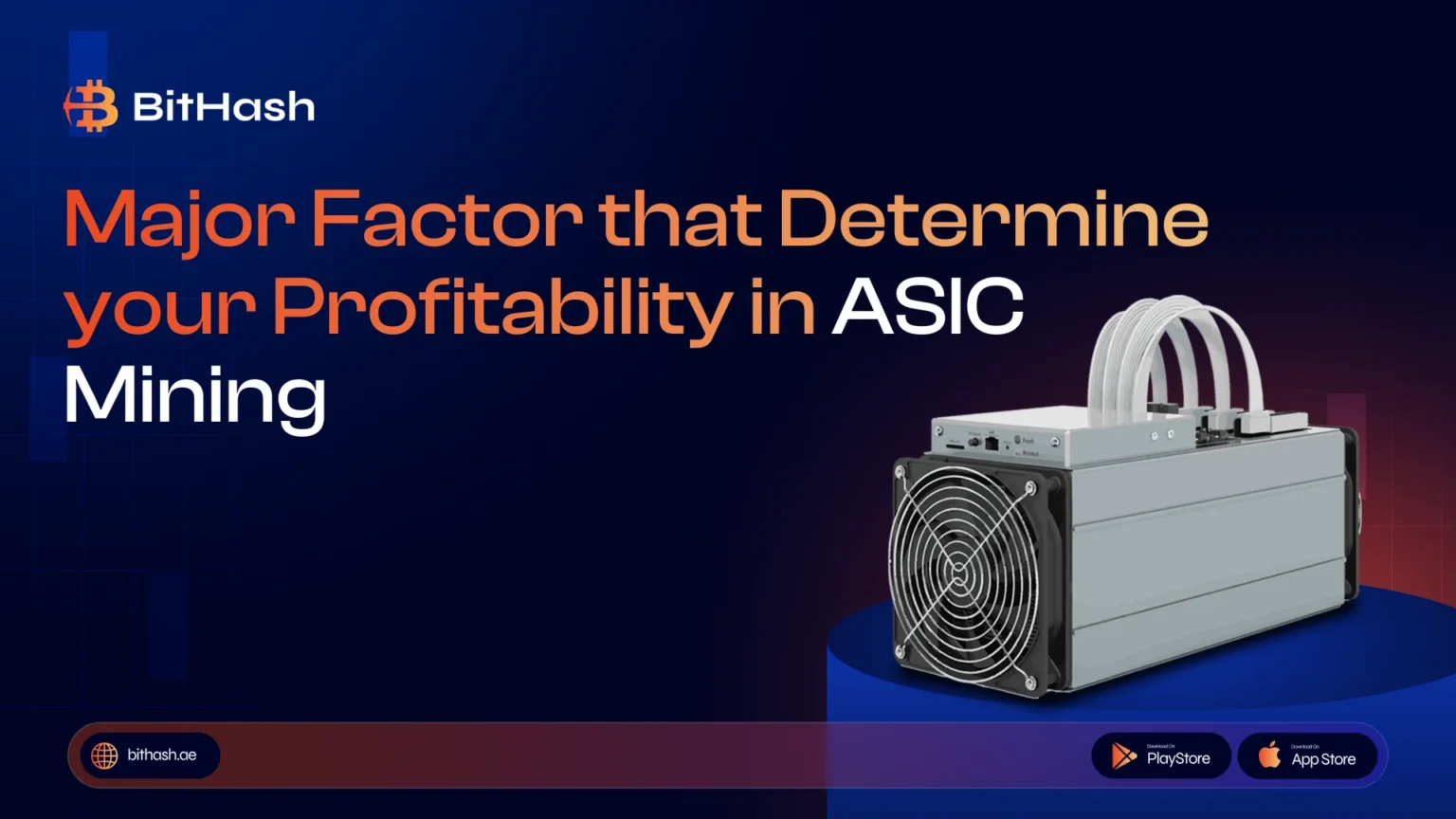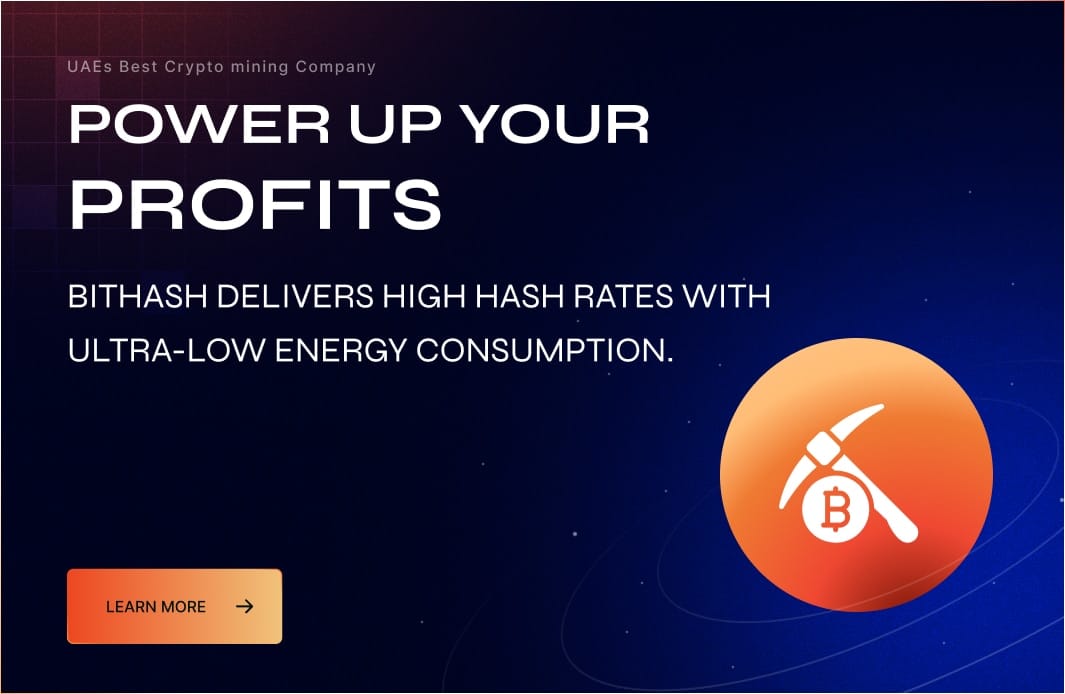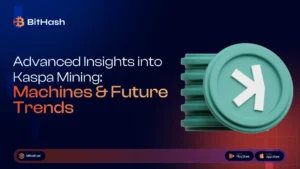ASIC (Application-Specific Integrated Circuit) mining has transformed bitcoin mining by delivering unmatched hash rate and efficiency. Whether you’re launching a new mining operation or scaling an existing one, choosing the right ASIC Miner is essential.
However, profitability isn’t guaranteed. It depends on several factors, like the hash rate of your ASIC Miner, the electricity cost to run it, and the overall setup of your mining hardware. A high hash rate boosts performance, but without controlling electricity cost, your mining operation may struggle to stay profitable.
In today’s competitive bitcoin mining landscape, your ASIC Miner must deliver both speed and cost-efficiency. Understanding how hash rate, mining hardware, and strategic planning impact your mining operation is crucial to achieving long-term success.
1. Hardware Efficiency and Cost
The backbone of your mining operation and a key driver of mining profitability.
When it comes to bitcoin mining, the performance and efficiency of your ASIC miner directly influence your earnings. Hardware efficiency isn’t just about raw power—it’s about how well your mining hardware converts electricity into hash rate. A well-optimized setup can significantly reduce electricity costs while maximizing output, making it essential for any serious mining operation.
Choosing the right ASIC miner is key to mining profitability. It determines how fast you can solve cryptographic puzzles and how much energy you’ll consume doing it. Since electricity cost is one of the largest ongoing expenses in bitcoin mining, selecting a miner with a high hash rate and low power draw is critical.
Additionally, your cooling system plays a crucial role in maintaining the efficiency of your hardware. Without proper cooling, your ASIC miner may overheat, leading to performance drops, increased electricity costs, and reduced mining profitability. A well-maintained cooling system ensures your mining operation runs smoothly and consistently.
Key Considerations:
- Hash Rate vs. Power Consumption A higher hash rate means faster block solving, but it must be paired with low power usage to keep electricity costs manageable.
- Initial Investment ASIC miners range from a few hundred to several thousand dollars. ROI depends on how quickly your mining operation can recover this cost through bitcoin mining rewards.
- Cooling System Requirements: Efficient cooling systems, whether air or immersion, help maintain optimal performance and extend the lifespan of your ASIC miner.
- Electricity Cost Management Miners in regions with low electricity costs have a major advantage in mining profitability. Consider location and energy contracts when planning your mining operation.
- Mining Hardware Must-Haves: Look for ASIC miners with proven reliability, high hash rates, and strong manufacturer support to ensure long-term success in Bitcoin mining.
2. Electricity Costs
The most critical factor influencing mining profitability across every mining farm.
Electricity cost is undeniably the largest operational expense in any cryptocurrency mining setup, especially when using high-powered ASIC miners. Whether you’re running a small mining farm or managing a large-scale bitcoin mining operation, controlling electricity cost is essential to sustaining long-term mining profitability.
In bitcoin mining, ASIC miners are designed for maximum hash rate output, but they also consume substantial amounts of energy. Without proper energy efficiency measures, even the most advanced ASIC miner can become a financial burden. This is why miners often prioritize energy-efficient models and invest in infrastructure that supports optimal performance with minimal power waste.
Why Electricity Cost Matters
- Direct Impact on Operating Costs: Electricity costs directly affect your daily operating expenses. For mining farms with dozens or hundreds of ASIC miners, even a slight increase in electricity rates can drastically reduce mining profitability.
- Energy Efficiency and ROI ASIC miners with better energy efficiency, measured in joules per terahash, can produce more hash rate per unit of power. This translates to lower electricity costs and higher returns, especially when market conditions are volatile.
- Renewable Energy Advantage: Many mining farms are now transitioning to renewable energy sources, such as hydroelectric, solar, and wind, to reduce electricity costs and enhance sustainability. Renewable energy not only lowers operating costs but also shields miners from fluctuations in fossil fuel prices.
- Location Strategy: To stay competitive, miners often relocate their mining farms to regions with subsidized or low-cost electricity. Countries with abundant renewable energy or favorable industrial rates attract large-scale cryptocurrency mining operations.
Strategic Considerations for Profitability
- Mining Pools and Efficiency: Joining mining pools can help offset electricity costs by providing more consistent payouts. While individual rewards may be smaller, mining pools reduce the risk of long gaps between block rewards and help stabilize income.
- Market Conditions and Timing: Electricity cost becomes even more critical during bearish market conditions. When bitcoin prices drop, mining profitability shrinks, and only the most efficient ASIC miners and mining farms can remain viable.
- Block Rewards and Transaction Fee.s As block rewards decrease over time due to halving events, transaction fees become a more important part of miner income. Efficient ASIC miners that can process more transactions per watt are better positioned to capitalize on this shift.
- Cooling and Infrastructure: High electricity usage generates heat, requiring robust cooling systems to maintain optimal ASIC miner performance. A well-designed cooling system enhances energy efficiency and reduces the risk of hardware failure, thereby further improving mining profitability.
3. Network Difficulty and Hashrate
The shifting landscape plays a crucial role in mining success.
In the world of bitcoin mining, network difficulty and hashrate are two of the most dynamic and influential factors affecting mining profitability. Every ~2 weeks, the Bitcoin network adjusts its mining difficulty to maintain a consistent 10-minute block time. This adjustment is based on the total computational power, or network hashrate, being contributed by miners globally.
Mining Difficulty
As more miners join the network and contribute greater computational power, the difficulty level increases. This means each ASIC miner must work harder to solve cryptographic puzzles, reducing the likelihood of earning block rewards. As the network becomes increasingly competitive, it becomes more crucial for your mining operation to utilize high-performance mining hardware, such as the Antminer S21, which offers exceptional hashing power and advanced power management features.
Bitcoin halving events, which occur approximately every four years, further complicate this equation. When a halving reduces the block reward by 50%, miners must rely even more on efficient ASIC miners and strategic power management to maintain profitability. In such scenarios, the computational power of your mining operation must be optimized to stay ahead of rising difficulty and shrinking rewards.
Global Hashrate and Competition
The global network hashrate represents the total hashing power utilized across all mining farms and mining pools worldwide. As this figure rises, competition intensifies. Your ASIC miner’s share of the network hashrate determines how often you successfully mine blocks and earn transaction fees. This is why upgrading to newer models, such as the Antminer S21, is essential; they offer improved energy efficiency and higher computational power, giving you a competitive edge.
Mining pools play a strategic role here. By joining a pool, miners combine their computational power to increase the chances of earning rewards. While individual payouts may be smaller, the consistency helps stabilize income, especially when network difficulty spikes or market conditions fluctuate.
Regulatory Environment and Strategic Planning
The regulatory environment also influences how miners respond to changes in network difficulty and hashrate. In regions with supportive policies, mining operations can scale more easily and invest in better infrastructure. Conversely, restrictive regulations may limit access to energy or hardware, forcing miners to relocate or scale down their operations. Understanding the regulatory environment is essential for long-term planning and risk mitigation.
4. Cryptocurrency Market Prices
The heartbeat of mining profitability is volatile, powerful, and unpredictable.
In cryptocurrency mining, rewards are paid in digital assets like Bitcoin, but your expenses, such as electricity, hardware, and maintenance, are all in fiat currency. This creates a direct dependency on market conditions. During bull markets, the value of mined coins rises, significantly boosting profitability and making even high-cost operations worthwhile. Conversely, bear markets can shrink margins or even render mining unprofitable, especially for setups with high operating costs.
Smart miners closely monitor cryptocurrency market trends and often adjust their strategies accordingly. Some choose to HODL their mined coins during downturns, anticipating future price increases. Others may liquidate immediately to cover expenses. Understanding the timing and impact of market fluctuations is essential for sustaining long-term profitability in bitcoin mining.
📌 Key Points:
- Market Conditions Matter Bull markets increase the value of mined coins, while bear markets can make mining unprofitable.
- Fiat vs. Crypto Mining rewards are in crypto, but expenses like electricity and maintenance are paid in fiat.
- Strategic Holding: Some miners choose to HODL during downturns, betting on future price recovery.
- Impact on Profitability Market volatility directly affects ROI and long-term sustainability of your mining operation.
5. Cooling and Infrastructure
Your strategy defines your stability—team up or go it alone.
Mining pools allow multiple miners to combine their computational power, increasing the chances of earning rewards. While payouts are smaller and shared among participants, they are more consistent and predictable in nature. This makes mining pools a popular choice for those seeking stable income, especially in competitive environments where solo mining is less viable.
Solo mining, on the other hand, involves operating independently. If successful, the miner receives the full block reward, but the odds of solving a block alone are significantly lower unless you have massive hashing power. For most miners, especially those with limited resources, joining a mining pool is a more practical and profitable approach.
📌 Key Points:
- Mining Pools offer consistent payouts by combining computational power across multiple miners.
- Solo Mining Full block rewards if successful, but requires significant hashing power and luck.
- Risk vs. Reward Pools reduce risk and stabilize income; solo mining offers higher rewards but lower odds.
- Strategic Fit Mining pools are ideal for small to mid-sized operations; solo mining suits large-scale setups.
6. Pool vs. Solo Mining
Your mining strategy shapes your consistency and potential rewards.
When it comes to bitcoin mining, choosing between mining pools and solo mining is a strategic decision that directly affects your income stability and long-term profitability. Each approach has its own advantages and trade-offs, and the right choice depends on your hashing power, risk tolerance, and goals.
Mining Pools
Mining pools enable multiple miners to combine their computational power, thereby increasing the chances of solving blocks and earning rewards. While payouts are shared among participants and are typically smaller, they are far more consistent, making mining pools ideal for those seeking a predictable income.
- Shared computational power boosts chances of earning rewards.
- Smaller but steady payouts help cover ongoing expenses, such as electricity and maintenance.
- Lower risk compared to solo mining, especially for small to mid-sized operations.
- Ideal for beginners or those without massive hashing power.
Solo Mining
Solo mining refers to operating independently, without joining a mining pool. If successful, the miner receives the full block reward and transaction fees. However, the odds of solving a block alone are extremely low unless you have a large-scale mining farm with significant hashing power.
- Full block rewards are awarded to the individual miner if the transaction is successful.
- Requires massive hashing power and a bit of luck.
- Highly unpredictable income, often with long gaps between rewards.
- Rarely profitable for individuals or small operations.
7. Taxes and Regulations
Legal clarity and compliance are essential for sustainable mining profitability.
Taxes and regulations play a crucial role in shaping the financial viability of your mining operation. Legal frameworks vary widely by country, and understanding them is essential to avoid penalties and ensure long-term success.
Taxation Factors
Mining income is often subject to taxation, and the rules can be complex. You may be liable for taxes on mined coins, capital gains when selling crypto, and even depreciation on your mining hardware.
- Income tax on mined cryptocurrency, depending on local laws.
- Capital gains tax when converting crypto to fiat or trading assets.
- Depreciation deductions may apply to ASIC miners and infrastructure.
Regulatory Risks
Governments may impose restrictions or outright bans on cryptocurrency mining, especially in regions facing energy shortages or environmental concerns. Staying informed about the regulatory environment is vital.
- Mining bans or licensing requirements can disrupt operations.
- Energy usage regulations may affect access to electricity or impose limits.
- Compliance with local laws helps avoid fines and shutdowns.
📌 Key Takeaways
- Understand your country’s legal framework for crypto mining.
- Keep accurate records for tax reporting and audits.
- Monitor changes in the regulatory environment to stay ahead of the curve.
- Consult professionals for tax planning and legal compliance.
Final Thoughts
ASIC mining isn’t a plug-and-play money machine. It’s a strategic business that demands careful planning, ongoing optimization, and constant awareness of market dynamics. From choosing the right ASIC miner to managing electricity costs and navigating regulatory environments, every decision plays a crucial role in shaping your mining profitability. Success in this space requires not just technical know-how, but also financial foresight and operational discipline.
Thinking of starting or scaling your mining operation? Whether you’re building a new mining farm, upgrading your cooling system, or evaluating the impact of bitcoin halving on your setup, I can help you analyze ROI, compare ASIC models, or even simulate profitability under different scenarios tailored to your goals. Just say the word, I’m here to help you mine smarter, not harder.





